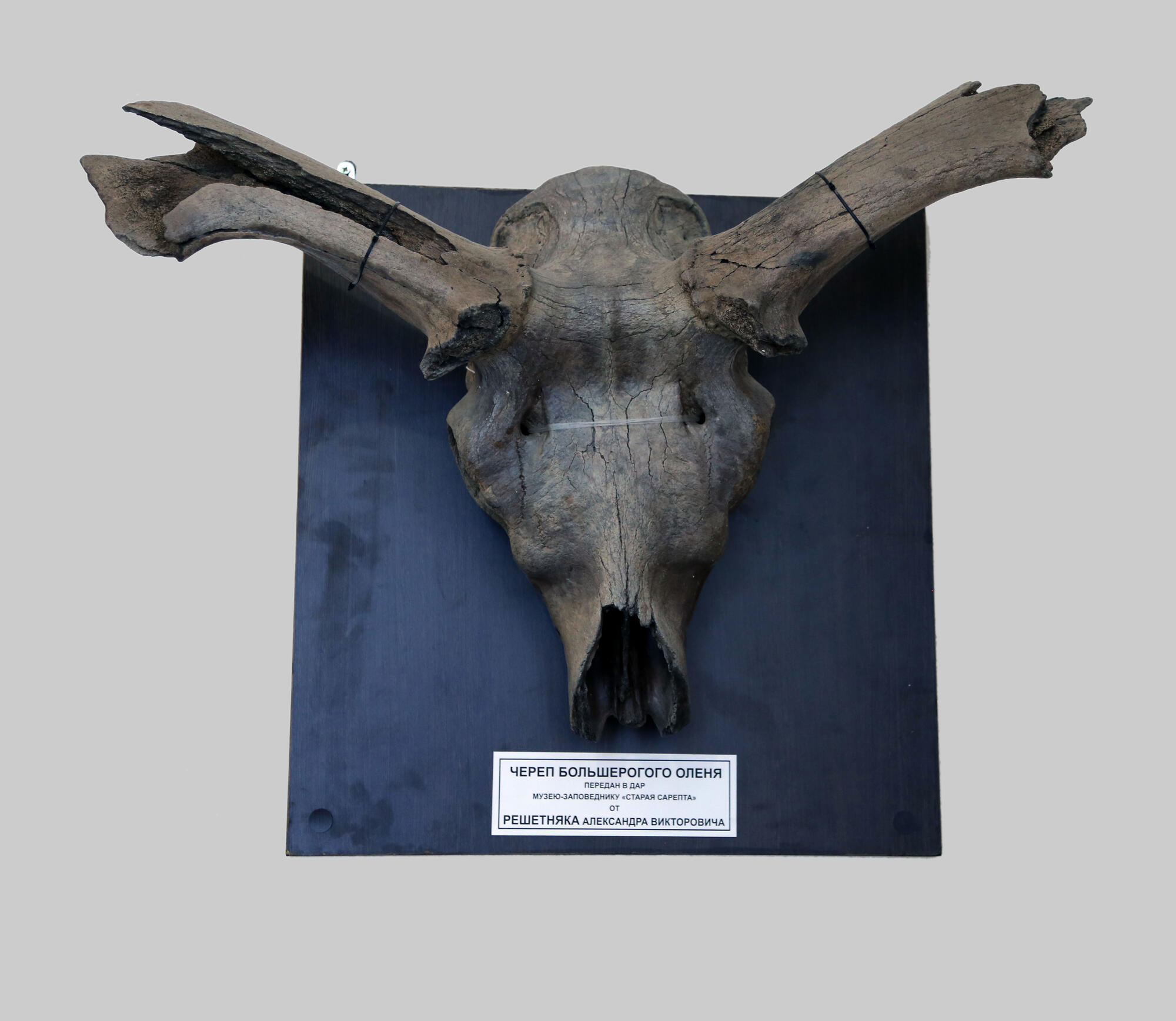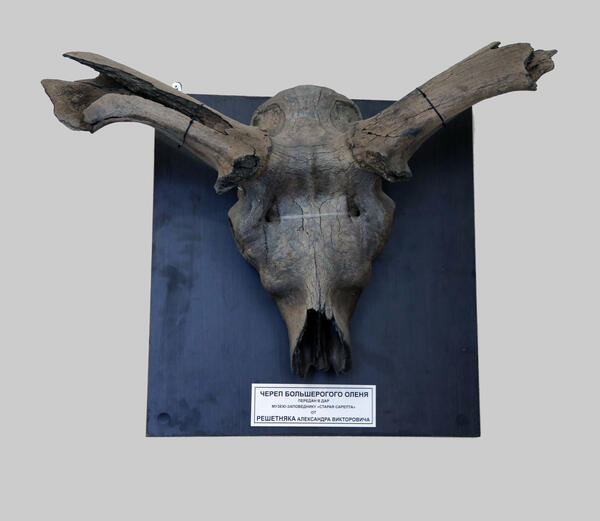Fossils that prove the existence of ancient animals in the Volga region have been found on the Volga banks for a long time. In the 19th century, the scientist Alexander Knoblokh conducted paleontological activities in the Sarepta settlement. He was fond of the history of the Lower Volga region, collected and sent fossil remains to the Zoological Museum of the Imperial Academy of Sciences in St Petersburg.
Large-horned deer, giant deer, or Irish deer is an extinct artiodactyl mammal from the giant deer genus stemmed from the Latin word ‘Megaloceros’. The deer lived in the Pleistocene and early Holocene.
The large-horned deer was in many ways similar to the modern fallow deer, but was much larger. Its huge, up to four meters in span, horns had the shape of a shovel and expanded strongly at the top, diverging into several branches. Because of these horns, male large-horned deer could not live and move in the forest, and inhabited mainly wet meadows. Only females and males who had dropped their horns for a while could enter the forests.
The large-horned deer as a species was formed about 400 thousand years ago. The remains of these animals were found in different parts of Western Europe, Asia and Central America, especially many of their skeletons were found in peat bogs in Ireland and Germany.
The largest number of remains of large-horned deer were found in the middle and southern latitudes of the North Caucasus, Crimea, Kazakhstan, in the Ryazan and Sverdlovsk regions in the former USSR.
The extinction of giant deer, like a number of other modern species of large animals, was associated with the advance of forests on plains and open spaces. In Europe, large-horned deer vanished from the earth en masse about 11 thousand years ago, but they were encountered in Siberia for about three thousand years longer.
The modern relative of giant deer is the European fallow deer. Despite the similarity of their horns, the large-horned deer are not closely related to the elk. If we trace the development of horns in various species of fossil deer, we can see that the size of the horse increased over time, and their upper end more and more looked like a shovel. The number of outgrowths on the horns also gradually increased.
Large-horned deer, giant deer, or Irish deer is an extinct artiodactyl mammal from the giant deer genus stemmed from the Latin word ‘Megaloceros’. The deer lived in the Pleistocene and early Holocene.
The large-horned deer was in many ways similar to the modern fallow deer, but was much larger. Its huge, up to four meters in span, horns had the shape of a shovel and expanded strongly at the top, diverging into several branches. Because of these horns, male large-horned deer could not live and move in the forest, and inhabited mainly wet meadows. Only females and males who had dropped their horns for a while could enter the forests.
The large-horned deer as a species was formed about 400 thousand years ago. The remains of these animals were found in different parts of Western Europe, Asia and Central America, especially many of their skeletons were found in peat bogs in Ireland and Germany.
The largest number of remains of large-horned deer were found in the middle and southern latitudes of the North Caucasus, Crimea, Kazakhstan, in the Ryazan and Sverdlovsk regions in the former USSR.
The extinction of giant deer, like a number of other modern species of large animals, was associated with the advance of forests on plains and open spaces. In Europe, large-horned deer vanished from the earth en masse about 11 thousand years ago, but they were encountered in Siberia for about three thousand years longer.
The modern relative of giant deer is the European fallow deer. Despite the similarity of their horns, the large-horned deer are not closely related to the elk. If we trace the development of horns in various species of fossil deer, we can see that the size of the horse increased over time, and their upper end more and more looked like a shovel. The number of outgrowths on the horns also gradually increased.



